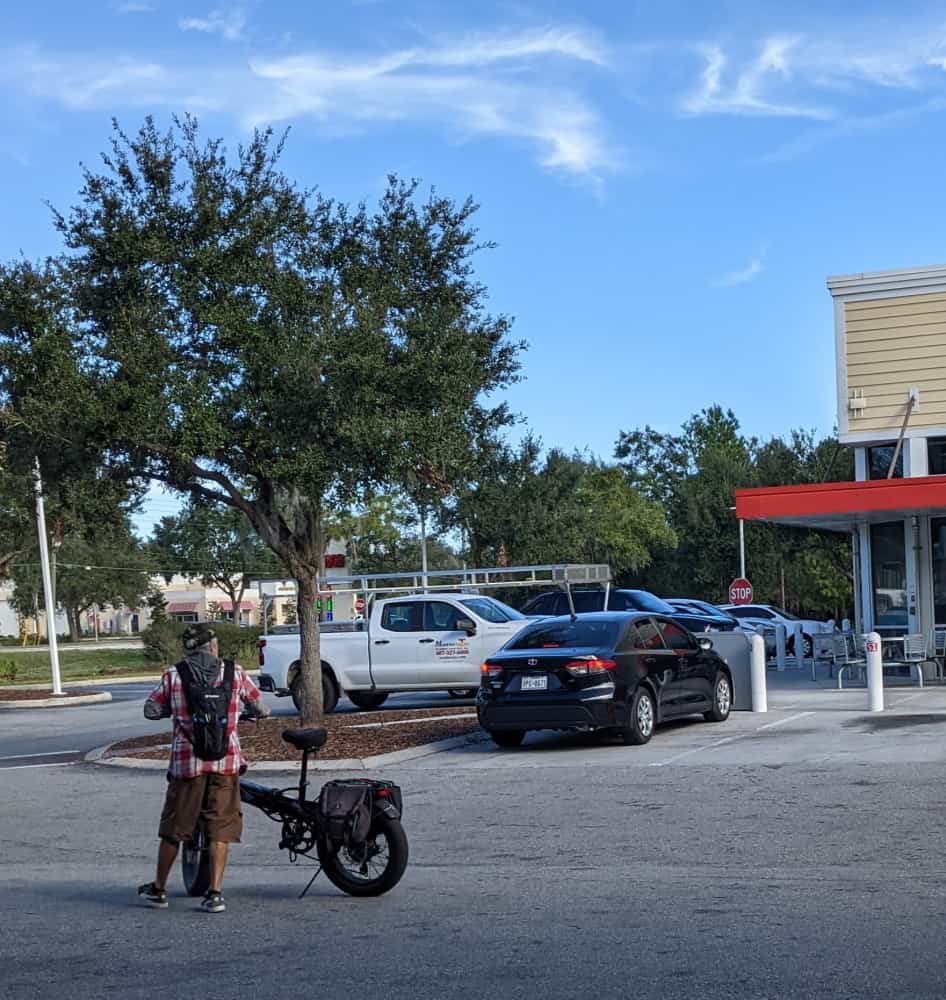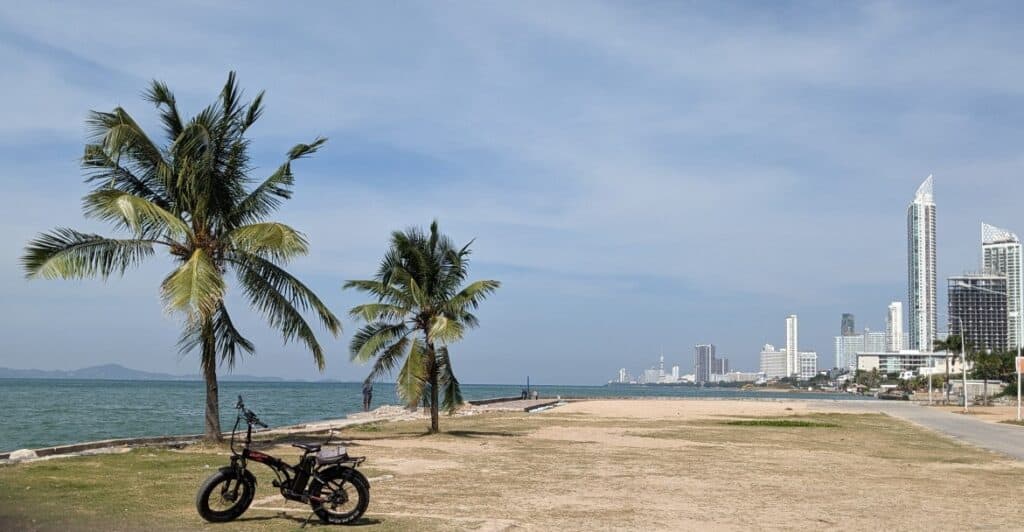Fat tire bikes have become increasingly popular for both experienced cyclists and recreational riders alike for their superior stability and sturdiness. But are fat tire bikes better for heavy riders? We’ll discuss the features of fat tire bikes, the benefits they offer large riders, and any drawbacks to consider.
- What Are the Benefits of Fat Tire Bikes?
- Are Fat Tire Bikes Better for Heavy Riders? 4 Reasons Why
- How Much Heavier Can You Go on a Fat Tire Bike?
- What Type of Terrain Are Fat Tire Bikes Good For?
- Do You Need Special Accessories for a Fat Tire Bike?
- Are Fat Bikes Harder to Ride?
- What’s the Best Fat Tire Bike for Heavy Riders?
- Conclusion
What Are the Benefits of Fat Tire Bikes?
Fat tire bikes offer several features that make them a great choice for heavier riders. Their wide tires provide better grip and stability, allowing riders to maneuver confidently on rugged off-road terrain. Additionally, the tires offer enhanced shock absorption which can help reduce fatigue when riding for extended periods of time. Plus, since the bikes feature increased traction, they require less effort to power than traditional mountain or road bikes.
Are Fat Tire Bikes Better for Heavy Riders? 4 Reasons Why
1. Fat bike tires have a wider surface area which helps to disperse the weight of the rider over a larger surface, making it easier to ride over challenging surfaces like mud or sand. This makes them ideal for heavier riders who need extra traction and stability when riding.
2. Fat tires are perfect for heavy riders because they have a lower PSI (pressure) than traditional road and mountain bike tires. These tires are also designed for off-road driving, making them great for tackling errant terrain like snow and sand.
3. Fat tire bikes are designed to absorb the bumps and obstacles in the terrain, providing a smoother ride. This makes them especially ideal for heavier riders who tend to experience greater amounts of shock when riding. Furthermore, their large tire diameter also provides more support and weight distribution than other bike types.
4. Fat tire bicycles are heavier than most other bike varieties, however the tradeoff is their superior durability. Thanks to the stronger components, an overweight rider does not have to worry about the strain put on individual parts.
Fat tire bikes are great for heavier riders due to their large tires, which provide more stability and support. The wide surface area of the tires helps distribute the rider’s weight evenly over the bike, resulting in more control over rough terrain and a generally more comfortable ride. Additionally, fat tire bikes tend to be more resilient when used on terrain that isn’t perfectly flat, like mud and snow. All of these factors make them great for heavier riders who are looking for comfort and stability during their ride.

How Much Heavier Can You Go on a Fat Tire Bike?
Depending on the brand and model, most fat tire bikes can comfortably handle riders weighing up to 300 pounds. However, it’s important to note that some models may have weight limits lower than this, so always double-check the manufacturer’s guidelines before making a purchase. It’s also best to opt for bikes with high-grade brakes, specially designed hubs, and thick rims that can withstand heavier loads.
Can a 300-Pound Person Ride a Bike?
Your weight should not keep you from enjoying a bike ride. There are bikes that exist that are able to support individuals weighing 300 pounds or more. The Mongoose Manus even has a weight capacity of up to 350 pounds, and some bike manufacturers produce stock models that can support up to 400lbs so larger riders can reap the benefits of cycling comfortably!
What Type of Terrain Are Fat Tire Bikes Good For?
Fat tire bikes are designed for a variety of terrain types, from flat city roads and paved parks to off-road trails, sand, snow and wet conditions. Their large tires give them superior grip and stability over rough terrain, making them a great choice for those looking for extra traction. They’re also incredibly durable and can handle sharp rocks, bumps in the road and other hazards more easily than a standard bike.
Do You Need Special Accessories for a Fat Tire Bike?
If you’re looking for extra stability and traction, you may want to consider investing in some additional accessories for your fat tire bike. Generally, these include larger tires, shorter cranks, and a wider handlebar. A lower bottom bracket will also help reduce the overall weight of the bike and keep it from tipping over when you hit a bump or rock. You may even want to upgrade your brakes depending on the type of terrain you’ll be riding through.

Are Fat Bikes Harder to Ride?
Fat tire bikes are specially designed to handle rough terrain and provide extra stability for heavier riders. These types of bikes feature wider tires which allow them better grip on uneven surfaces like snow, sand, or rocks. This makes them ideal for those who are looking for greater stability when riding on these conditions.
Fat tire bikes have wider tires and lower air pressure, meaning they can handle heavier loads more easily than other kinds of bicycles. The wider tires also provide better grip on the road, making them an ideal choice for heavier individuals who want to ride confidently. However, these tires may require a bit more effort to peddle due to the decreased air pressure.
Many cyclists feel that fat tire bikes provide a smoother ride for heavier riders due to the larger tires, which absorb more of the shock from the road or hill. Furthermore, the additional width of the tires allows for better handling, improved traction and stability. However, if you are looking to use your fat tire bike primarily on paved surfaces, there may be certain adjustments that are necessary in order to make your ride as smooth as possible.
Are fat tire bikes are better for heavier riders? Yes, they provide more stability due to the increased contact area with the road. Fat tires also require less air pressure, making peddling easier and reducing the effort needed to ride the bike. Additionally, a tire with a slicker tread can help minimize friction for smoother rides.
What’s the Best Fat Tire Bike for Heavy Riders?
While there are no hard-and-fast rules for what type of fat tire bike is best for you, heavier riders tend to prefer models that have additional features, such as disc brakes, larger rims and tires, and a lower center of gravity. Keep in mind that you want to choose a model with enough clearance between your body and the ground so that you can easily maneuver the bike on even terrain. Consider taking an actual test ride before making your decision to ensure it feels comfortable and provides sufficient control.
Conclusion
Are fat tire bikes better for heavy riders? Many people find that riding a fat tire bike can make cycling easier and more comfortable for heavier riders. The extra width of the tires adds increased stability, shock-absorbing properties, and extra traction to create a smoother ride overall. Moreover, the larger tires can help to reduce pressure on the ankles and knees of those who are carrying more weight.
Generally speaking, these bikes offer a lot of options when it comes to fit and handling. Their wide tires and sturdy frames provide an ideal setup for larger cyclists who may be worried about stability or balance on a traditional road bike. With the extra cushioning that these thicker tires provide, fat tire bikes are also better able to absorb bumps in the road that could potentially cause discomfort when cycling.
If you’re a heavier rider, you may want to consider a fat tire bike for your cycling needs. The oversized tires and strong construction are designed to better withstand more weight and provide more stability. Plus, these bikes offer extra grip on off-road terrains. Fat tires can also help to absorb some of the shock from bumps in the road, making them ideal for those who weigh more than average. Fat tire bikes may be the better choice for heavier riders so they can safely and securely enjoy their biking adventures!


![The Benefits of Cycling Regularly: Top 10 Reasons [2022] 4 top benefits of cycling regularly](https://www.mybikexl.com/wp-content/uploads/2018/04/A-man-is-cycling-in-the-road-1024x682.jpg)


